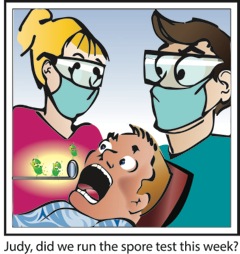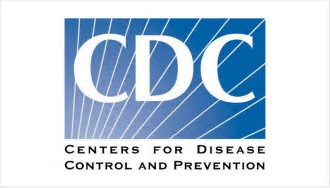Sterilizer monitoring in a dental office, when properly implemented, is an important part of infection…
Surface Disinfection in Dentistry
Proper surface disinfection of dental work surfaces is essential for preventing the transmission of infectious pathogens to patients and health care workers. The Centers for Disease Control and Prevention (CDC) defines disinfection as the “destruction of pathogenic and other kinds of microorganisms by physical or chemical means.”
In order to protect human health and the environment, the Environmental Protection Agency (EPA) regulates surface disinfectants as pesticides. The term “pesticide” is broad, encompassing any chemical designed to destroy or inactivate disease-producing bacteria and other microorganisms Before a surface disinfectant can be sold or used in the United States, it must first have EPA approval and be labeled with an EPA registration number. Pesticide manufacturers and/or distributors must submit scientific data that documents a product’s effectiveness and the potential health and environmental effects. Before registration is granted, EPA scientific and technical personnel review the data on the product to ensure it is properly labeled and will not cause adverse effects to human health and/or the environment.
The EPA-approved labels specify indications for use (contact time, application methods) and provide approved efficacy claims. Only claims that are listed on the registered label can be made regarding a disinfectant’s efficacy. Stronger disinfectants are not necessarily better, and can actually damage equipment, the environment, and even dental personnel. It is important for dental staff to select a disinfectant that provides the least hazardous side effects, yet is still efficacious for bloodborne pathogens of concern in a dental office.
In Dentistry…
CDC recommends all dental personnel to clean and disinfect all clinical contact surfaces that are not protected by impervious barriers, in accordance with manufacturer’s instructions. Additionally, all housekeeping surfaces (e.g. floors, walls, sinks) should be cleaned with detergent and water.
Environmental surface disinfectants must be:
- EPA-registered – Note that in California, all pesticides, including disinfectants, must be registered and approved for use by both Federal EPA and Cal/EPA
- Hospital-grade (kills S. aureus, S. cholerasesuis, P. aeruginosa)
- Labeled as effective against HIV/HBV or TB.
Adequate cleaning is critical! Before disinfection can be effective, surfaces must be cleaned of debris. Surfaces cannot be adequately covered with disinfecting solution if dirt and debris remain on the surfaces because the gunk could actually deactivate the active disinfecting agent(s). After cleaning surfaces with a cleaning solution, the chemical disinfectant should be applied for the recommended contact time, and then wiped dry if necessary. It is important to follow all label instructions for safety, efficacy, and proper disinfecting methods.
OSHA Review, Inc. a registered continuing education provider in the State of California, specializing in Dental Practice Act, infection control, and Cal/OSHA training. OSHA Review subscribers in California receive updated regulatory compliance and infection control training thorough our bi-monthly newsletter.
OSHA Review, Inc. provides the SUV Disinfectant & Cleaner in both concentrate and ready-to-use wipes. SUV Disinfectant and Cleaner meets OSHA and EPA regulations, and CDC recommendations. SUV is a hospital disinfectant proven effective against HIV, HBV and HCV.


